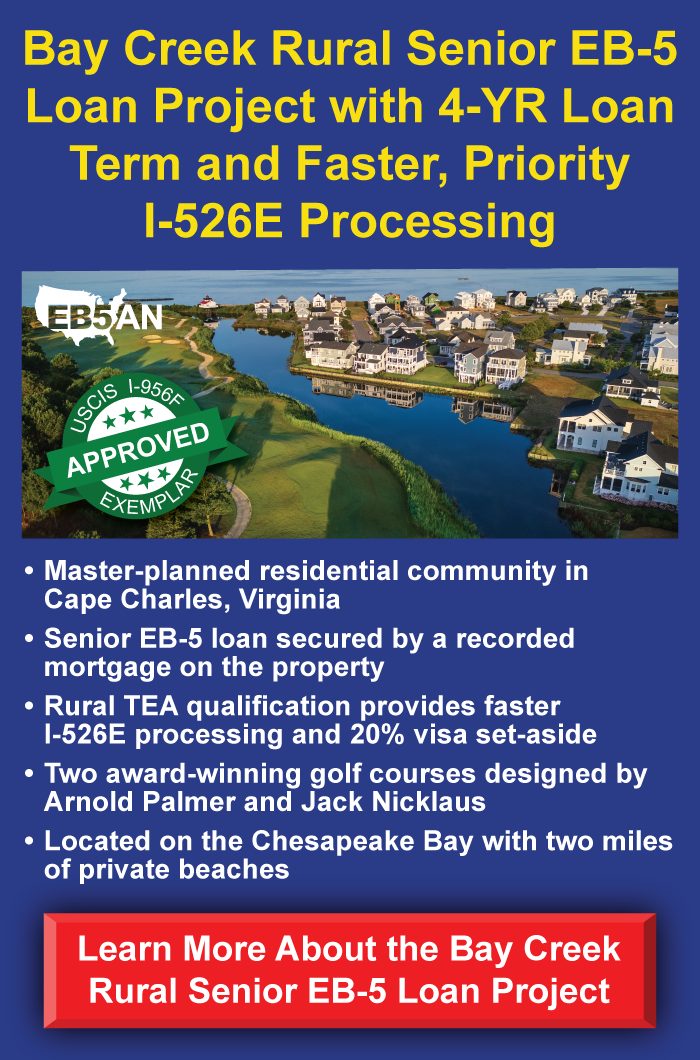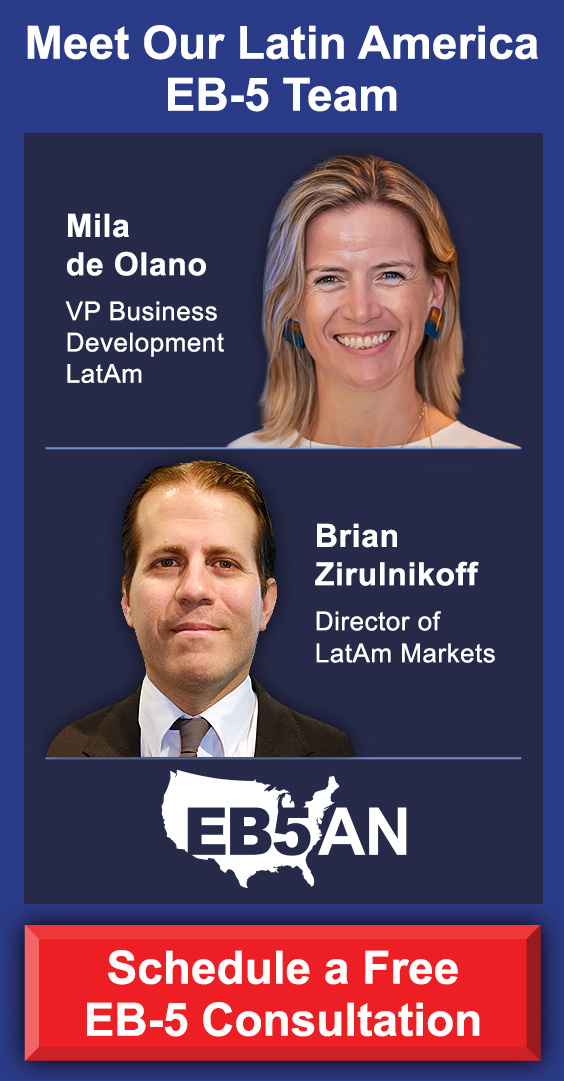The U.S. EB-5 Immigrant Investor Program has long been an attractive pathway for foreign nationals seeking U.S. residency. By investing a required sum of capital—$800,000 in targeted employment areas (TEAs) or $1,050,000 in non-TEAs—investors can secure a Green Card for themselves and their immediate family. However, with the passage of the EB-5 Reform and Integrity Act of 2022 (RIA), new regulations have drastically changed the landscape of direct EB-5 investments.
As a result, direct EB-5 investments have become riskier, with significantly increased compliance and documentation requirements. This article will explore the challenges and risks associated with direct EB-5 investments post-RIA, and why investing through a regional center may offer a safer, more stable alternative.
Increased Compliance Requirements Post-RIA
Challenges With Source-of-Funds Verification
Risks of Job Creation and Business Viability
Increased Financial and Operational Risks
Why Regional Center Investments Are the Safer Choice
EB5AN Can Help You Invest in Safe Regional Center Projects
Increased Compliance Requirements Post-RIA
One of the most significant changes brought about by the RIA is the imposition of stricter compliance requirements for direct EB-5 investments. While previous regulations allowed for a relatively straightforward investment process, the new rules are much more stringent and complex.
Under the RIA, investors are now subject to enhanced scrutiny, particularly when it comes to the source of funds used for their investments. Now, United States Citizenship and Immigration Services (USCIS) is requiring more detailed documentation of the source of all funds used in the investment, including non-EB-5 capital contributions. This means that an investor must provide a clear, verifiable paper trail for both their EB-5 investment and any additional capital involved, which increases the likelihood of receiving requests for evidence (RFEs) from USCIS.
For example, USCIS may issue an RFE asking for additional documentation related to non-EB-5 sources of capital. A recent redacted reference to such an RFE highlights the complexity of these new requirements:
“The establishment of a new commercial enterprise may be used as the basis of a petition for classification as an alien investor even though there are several owners of the enterprise, including persons who are not seeking classification under section 203(b)(5) of the Act and non-natural persons, both foreign and domestic, provided that the sources of all capital invested are identified and all invested capital has been derived by lawful means.”
This suggests that USCIS is now focused on ensuring that every cent invested in a direct EB-5 project, whether it’s the required EB-5 capital or additional funds, is fully traceable and derived from lawful sources. As such, the paperwork and documentation burden has become significantly heavier for direct EB-5 investors.
Challenges With Source-of-Funds Verification
A significant risk of direct EB-5 investments is the increased likelihood of being asked to provide extensive evidence about the source of funds for the capital being invested. While the focus on source of funds is not new in the EB-5 program, the RIA’s focus on detailed and rigorous verification presents a major hurdle for direct investors.
In the case of direct investments, USCIS requires investors to substantiate the legality of their funds for both the EB-5 capital and other sources of capital invested into the project. For example, if an investor pools money from different sources (such as loans or personal savings), they must demonstrate the legal origins of each fund and provide clear documentation. This often means providing evidence such as bank statements, tax returns, and contracts, and it may require disclosing private financial information that many investors may find uncomfortable or difficult to produce.
Given the increased scrutiny of the source of funds, direct investors are finding themselves under the microscope more than ever before. This can lead to delays, complications, and potential denials, which can be a serious risk for investors looking to secure their Green Card.
Risks of Job Creation and Business Viability
For an EB-5 investment to qualify, it must lead to the creation of at least ten full-time jobs for U.S. workers. With direct investments, the onus is on the investor to prove that their investment will meet this job creation requirement. This can be much more difficult to accomplish compared to regional center investments.
Direct investors must demonstrate job creation through comprehensive business plans, financial projections, and actual evidence of employees hired. However, the risk of failure in creating the requisite jobs is much higher in direct investments because many smaller enterprises may face challenges scaling their operations and hiring the necessary workforce. If the business fails to meet these job creation requirements, the investor’s EB-5 petition could be denied, and their Green Card application could be jeopardized.
Increased Financial and Operational Risks
Direct EB-5 investments also carry significant financial and operational risks. Unlike regional centers, which typically pool funds from multiple investors to finance larger, more diversified projects, direct investments involve a single investor’s capital in a standalone business. The financial stability of that business is therefore entirely dependent on the success of the individual project.
Moreover, many direct EB-5 investments are in startup companies or small businesses, which carry a higher risk of failure than more established ventures. A business that fails to generate the necessary revenue or suffers from operational difficulties could cause significant financial loss for the investor and may lead to the failure of the EB-5 petition if the business does not meet the program requirements.
Why Regional Center Investments Are the Safer Choice
For the vast majority of EB-5 investors, regional center investments offer a significantly safer and more practical path compared to direct investments. The main advantage lies in the reduced risk and simplified process.
Unlike direct investments, which require the investor to actively manage the business and directly create at least 10 full-time jobs, regional center investments offer a more hands-off approach. These projects are typically pre-vetted and come with a clear business plan and job creation strategy aligned with EB-5 requirements.
A key benefit of regional centers is their ability to count not just direct jobs, but also indirect and induced jobs toward the job creation requirement. This broader job calculation greatly improves the chances of meeting USCIS criteria. In contrast, direct investments are limited to direct jobs only, making compliance more challenging—especially for small businesses or startups.
Regional centers are designated by USCIS to pool capital from multiple investors into large-scale projects in sectors like real estate, infrastructure, or hospitality. These projects tend to be more financially stable and operationally sound, which helps mitigate investor risk. The collective investment model also reduces the chance that any one investor’s immigration outcome will hinge on the success of a single, smaller venture.
In addition to offering stronger project fundamentals, regional centers often handle the bulk of USCIS reporting and compliance requirements. This significantly reduces the administrative burden on the investor.
Overall, regional center investments provide a more streamlined and secure EB-5 experience—especially for those seeking minimal day-to-day involvement and a more predictable path to permanent residency.
EB5AN Can Help You Invest in Safe Regional Center Projects
While the EB-5 program remains an appealing pathway to U.S. residency, direct investments carry significant risks. Investors face higher compliance requirements, more stringent documentation demands, and increased operational and financial risks. For more than 96% of all EB-5 investors, the more stable and secure option remains investing through a USCIS-approved regional center, where the risks are more evenly distributed, and the burden of compliance and job creation is often managed by professionals.
EB5AN has helped more than 2,300 families from 70+ countries become lawful permanent residents of the United States. Our team has more than a decade of experience and offers clients first-rate, low-risk EB-5 regional center projects with a 100% USCIS project approval rate.
If you would like to know more about your EB-5 investment options, book a free call with our expert team today.










